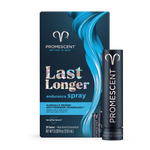Figuring out how to put on a condom is simple. Follow this guide to learn how to put it on and why it's important to use during sex.

reviews


reviews

Knowing how to put on a condom isn’t difficult. Our guide will help make it as easy as tying your shoes.
In the days of Rome, men used condoms made of linen and animal parts. While some still prefer natural skin condoms, latex and polyurethane are the most common condom materials today.
With the tip pointing up and pinched, place the condom on the head of the erect penis, and unroll it down to the base.
While holding on to the rim of the condom, pull out the softening penis.
Stop sex immediately and put on a new condom. If there are any pregnancy concerns, contact a medical professional or consider getting emergency contraception.
Learning how to put a condom on correctly is necessary for safe sex. Here’s what to know about properly putting on a condom.
There are countless ways to put on a condom, but before putting it on, keep this next point in mind. Condoms don't last forever.
Check the expiration date on the condom packaging to ensure the condom hasn't degraded. Also, don't use teeth or scissors to open the wrapper.
Any damage to a condom can cause it to break when you need it the most. Once you’ve gotten your protection out of the wrapper, here’s what to do to put it on.
Uncircumcised individuals may find it more comfortable to pull the foreskin back before covering the tip with the condom.
A few drops of lubrication inside of the condom can make putting it on safer and more comfortable. Putting lube on the outside may help prevent the condom from breaking by reducing friction.
Taking your condom off carefully is as important as how to properly put on a condom. Here’s what to do when taking it off.
Remember, don't wait until the penis entirely goes soft. It can cause the condom to loosen and let ejaculate out.
When you're done with the condom, throw it away. Perhaps most importantly, don't reuse it.
Beyond putting on a condom, there are other things that are important to remember when using one. Here are some tips for proper condom use:
Condoms protect against pregnancy for those that are sexually active and not ready to have a kid. It's also important to use condoms to reduce the risk of contracting a sexually transmitted disease (STD), which includes HIV.
But the user and their partner will be most protected when the condom is in good condition and put on properly.
Other benefits:
People don't always notice when a condom breaks. But, if you or your partner happen to notice it, stop sex immediately and put on a new condom.
If there are pregnancy concerns, contact a doctor, nurse practitioner, or health clinic to inquire about emergency contraception (morning-after pill). Morning-after pills like Plan B can be purchased over the counter at drug stores, and they can be taken up to 5 days after a condom breaks.
Getting tested for STDs and STIs regularly is always a healthy choice, even if a condom doesn't break.
People can be asymptomatic and unaware that they have one. If left untreated, it can lead to serious infections and other complications.
Properly putting on a condom every time you have sex is the main way to protect yourself against pregnancy, STIs, and STDs.
Check the condom packaging for an expiration date and examine it for punctures, tears, or other damage.
Store your condoms in cool, dry places and away from sunlight. Don't flush condoms down the toilet after use.
It's not unusual to lose an erection when using a condom. Consider wearing thinner condoms and adding water-based or silicone lubrication to make wearing condoms more comfortable and pleasurable.
Our team has over a decade of experience in the sexual wellness field and are experts in sexual dysfunctions, like premature ejaculation. We help couples and individuals better understand treatment options available for different types of sexual needs and educate the public on all things related to intimacy. All of our authored content is medically reviewed for accuracy and reliability.
Absorption Pharmaceuticals LLC (Promescent) has strict informational citing guidelines and relies on peer-reviewed studies, academic or research institutions, medical associations, and medical experts. We attempt to use primary sources and refrain from using tertiary references and only citing trustworthy sources. Each article is reviewed, written, and updated by Medical Professionals or authoritative Experts in a specific, related field of practice. You can find out more about how we ensure our content is accurate and current by reading our editorial policy.
Khan F, Mukhtar S, Dickinson IK, Sriprasad S. The story of the condom. Indian J Urol. 2013 Jan;29(1):12-5. doi: 10.4103/0970-1591.109976. PMID: 23671357; PMCID: PMC3649591. Accessed on Feb, 02, 2023.
"CDC - How You Can Prevent Sexually Transmitted Diseases." Cdc.gov, 2022, https://www.cdc.gov/std/prevention/default.htm. Accessed on Feb, 02, 2023.
Hill BJ, Sanders SA, Crosby RA, Ingelhart KN, Janssen E. Condom-associated erection problems: behavioural responses and attributions in young, heterosexual men. Sex Health. 2015 Oct;12(5):397-404. doi: 10.1071/SH14051. PMID: 26166025; PMCID: PMC4712123. Accessed on Feb, 02, 2023.
"Planned Parenthood - How effective are condoms?" Plannedparenthood.org, 2023, www.plannedparenthood.org/learn/birth-control/condom/how-effective-are-condoms. Accessed on Feb, 02, 2023.
"CDC - Diseases & Related Conditions." Cdc.gov, 2022, www.cdc.gov/std/general/default.htm. Accessed on Feb, 02, 2023.
"Planned Parenthood - Emergency Contraception." Plannedparenthood.org, 2023, www.plannedparenthood.org/learn/morning-after-pill-emergency-contraception. Accessed on Feb, 02, 2023.
"How soon do STI symptoms appear? - NHS." Nhs.uk, 2019, www.nhs.uk/common-health-questions/sexual-health/how-soon-do-sti-symptoms-appear/. Accessed on Feb, 02, 2023.

reviews
Your Cart Is Empty